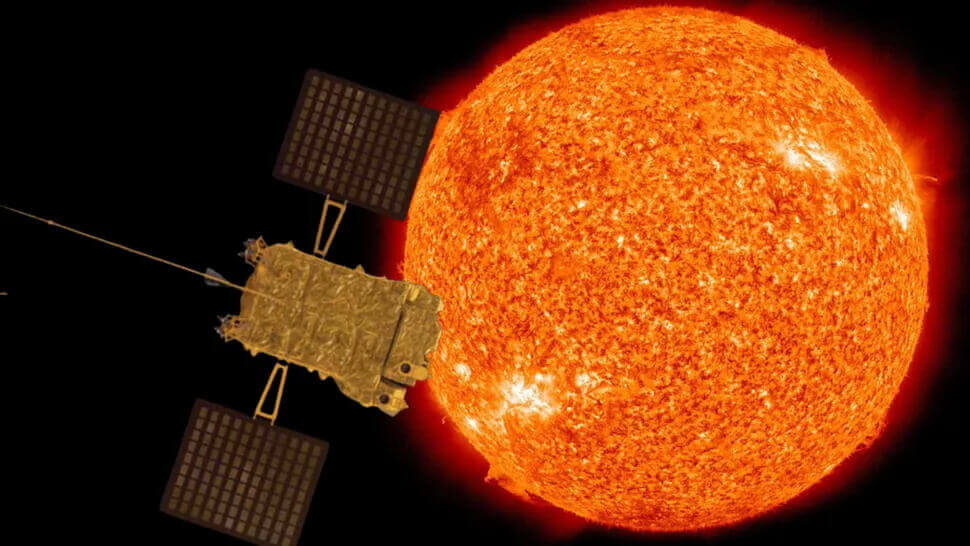Aditya-L1, India’s first solar mission, will arrive at its destination, Lagrange Point 1, early next month, around the first week of January 2024, according to Indian Union Minister Dr Jitendra Singh.
During an exclusive interview with Sansad TV in New Delhi, Singh, the Union Minister of State (Independent Charge) Science & Technology, MoS PMO, Personnel, Public Grievances, Pensions, Atomic Energy and Space, also announced that Indian Space Research Organisation (ISRO) will conduct a series of tests related to India’s first human space mission, Gaganyaan, over the next year.
India’s Solar Mission
Aditya L1 is India’s first solar mission, which was launched on 2 September aboard PSLV-C57.
Recently, ISRO chief S Somnath announced that the mission will reach the orbit around L1 on 7 January.
L1 is one of the five Lagrange points or ‘equilibrium points’ in the Sun-Earth system and lies about 1.5 million kilometres from the Earth between the planet and the Sun.
ISRO intends to install its seven scientific payloads in a halo orbit at this vantage point in space to conduct research.
A few weeks ago, the mission captured the first complete images of the Sun using the Solar Ultraviolet Imaging Telescope.
Private Investment in the Space Sector
Singh said that the mission has been made possible due to PM Narendra Modi’s courage and conviction, who removed historical taboos and created a supportive environment by allowing private actors into India’s space sector, which has resulted in a resounding reaction from start-ups and the industry.
India Education Diary : “#AdityaL1”, India’s First Solar Mission, Will Reach Its Destination, Lagrange Point 1, Early Next Month, To Be Precise, Around First Week Of January#ISROhttps://t.co/AfFjQXFRxU
— Dr Jitendra Singh (@DrJitendraSingh) December 19, 2023
He further mentioned that over 10,000 people came to see the Aditya-L1 launch.
“With the unlocking of Space Technology, Dr Jitendra Singh said, the common masses of the country have been able to witness the launch of the mega space events like Chandrayaan-3 and Aditya,” Sigh said.
“Experts in Space research who had migrated abroad are returning and setting up Start-ups,” he highlighted.
Space Start-Ups, National Research Foundation
Singh declared, “Our parameters and our yardstick have to be global if we are to achieve global standards.”
“From just one start-up in the space sector four years back, we have almost 190 private space start-ups after opening up of the sector, and the earlier ones of them have now turned entrepreneurs,” he said.
He mentioned that India witnessed an investment of over Rs. 1,000 crore (~$120 million) in space start-ups in the last nine months of the current financial year from April to December 2023.
Singh stated that the Anusandhan National Research Foundation (NRF), which would get roughly 70% of its funding from non-governmental sources, will open the door for the PPP model in India’s Science and Technology objectives.
He pointed out that private sources fund between 50 and 60% of NASA’s initiatives.
Indian Astronaut in International Space Station
Singh said that even though India’s space project began later than most, other major spacefaring countries were still vying to reach the moon.
The world is eagerly expecting Chandrayaan-3 research, which landed on the uncharted South Polar zone of the moon, he stated.
The Minister mentioned that during his visit to Washington, PM Modi stated that he expected the NASA proposal to send an Indian astronaut to the International Space Station (ISS) to be implemented in 2024.
According to Singh, “India is using space applications in practically every industry, including smart cities, “Svamitva” GPS land-mapping, infrastructure development, etc.”
“Space research now touches each and every person’s life in one way or the other,” he said.
India in Space
India has made significant strides in the space sector in recent years, with missions that are cost-effective and efficient.
PM Modi announced that the country is aiming to set up a space station by 2035. Additionally, the country is planning to send a crewed mission to the moon by 2040.
The country also achieved a major milestone in August by successfully conducting the Chandrayaan-3 mission, landing a spacecraft on the far side of the moon.

